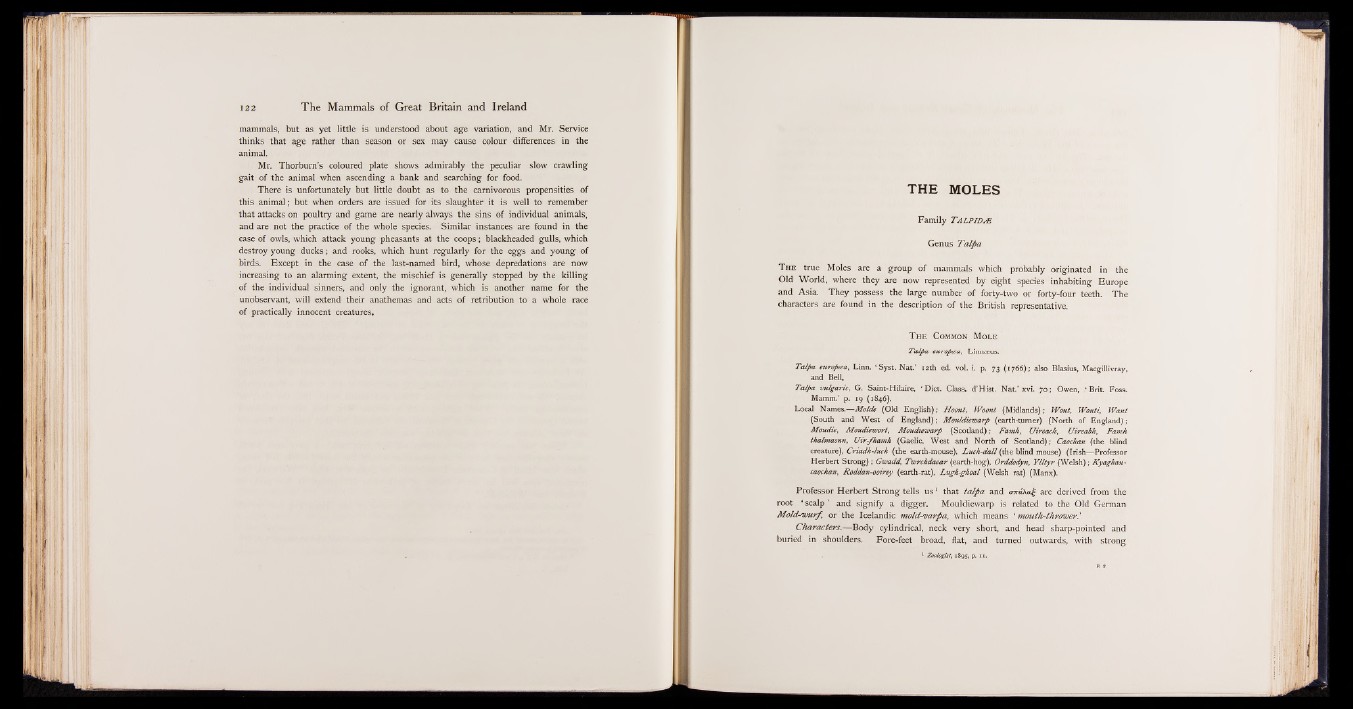
mammals, but as yet little is understood about age variation, and Mr. Service
thinks that age rather than season or sex may cause colour differences in the
animal.
Mr. Thorburn’s coloured plate shows admirably the peculiar slow crawling
gait of the animal when ascending a bank and searching for food.
There is unfortunately but little doubt as to the carnivorous propensities of
this animal; but when orders are issued for its slaughter it is well to remember
that attacks on poultry and game are nearly always the sins of individual animals,
and are not the practice of the whole species. Similar instances are found in the
case of owls, which attack young pheasants at the coops; blackheaded gulls, which
destroy young ducks; and rooks, which hunt regularly for the eggs and young of
birds. Except in the case of the last-named bird, whose depredations are now
increasing to an alarming extent, the mischief is generally stopped by the killing
of the individual sinners, and only the ignorant, which is another name for the
unobservant, will extend their anathemas and acts of retribution to a whole race
of practically innocent creatures.
THE MOLES
Family T a l p iDjE
Genus Taipa
T h e true Moles are a group of mammals which probably originated in the
Old World, where they are now represented by eight species inhabiting Europe
and Asia. They possess the large number of forty-two or forty-four teeth. The
characters are found in the description of the British representative.
T h e C o m m o n M o l e
Taipa europeea, Linnaeus.
Taipa europeea, Linn. ‘ Syst. N a t ’ 12th ed. vol. i. p. 73 (1766); also Blasius, Macgillivray,
and Bell.
Taipa vulgaris, G. Saint-Hilaire, ‘ Diet. Class. d’Hist. Nat.’ xvi. 70; Owen, ‘ Brit. Foss.
Mamm.' p. 19 (1846).
Local Names.— Molde (Old English); Hoont, Woont (Midlands); Wont, Wonti, Want
(South and West o f England); Mouldiewarp (earth-turner) (North o f England) ;
Moudie, Moudiewort, Moudiewarp (Scotland) ; Famh, Uireach, Uireabh, Famh
thalmasnn, Uir-fhamh (Gaelic, West and North o f Scotland); Caochan (the blind
creature), Criadk-luch (the earth-mouse), Luch-dall (the blind mouse) (Irish—-Professor
Herbert Strong); Gwadd, Twrchdaear (earth-hog), Orddodyn, Ylltyr (Welsh); Kyaghan-
caochan, Roddan-ooirey (earth-rat), Lugh-ghoal (Welsh rat) (Manx).
Professor Herbert Strong tells us 1 that taipa and tnraXa£ are derived from the
root * scalp ’ and signify a digger. Mouldiewarp is related to the Old German
Mold-wurf, or the Icelandic mold-varpa, which means ‘ mouth-thrower.’
Characters.— Body cylindrical, neck very short, and head sharp-pointed and
buried in shoulders. Fore-feet broad, flat, and turned outwards, with strong